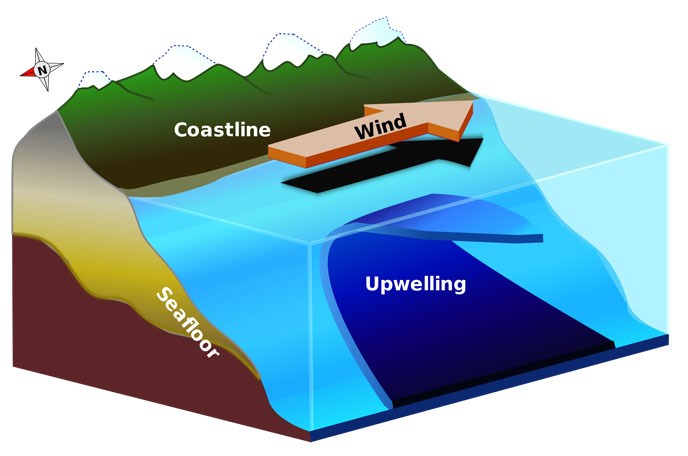Increased numbers of blue whales spotted in Channel Islands region
CHANNEL ISLANDS REGION, Calif. – The National Oceanic and Atmospheric Administration (NOAA) urges boaters to take care as up to 30 blue whales, including multiple mother/calf pairs, have been reported feeding in the Channel Islands area recently.
The federal ocean-focused agency explained the whales are attracted to the area due to the seasonal upwelling of cold, nutrient-rich water which creates the perfect conditions for krill, the primary prey for blue whales.
Upwelling happens when winds running parallel to the coast as well as the rotation of the Earth, push warmer surface water offshore allowing colder water from deeper in the ocean to be pulled up to the surface.

The illustration above shows how upwelling works.
The image below shows how the unique geography of the Channel Islands region creates the conditions that draw blue whales to the region.

The Channel Islands National Marine Sanctuary was designated in 1980 by NOAA and includes about 1,470 square miles of ocean water surrounding Channel Islands National Park.
For more information about national marine sanctuaries around the country, click here.
According to NOAA, when you encounter marine mammals, you are asked to slow down and operate at a no-wake speed and when you encounter whales, you are asked to put your engine in neutral and allow the gentle giants to pass.
You should never follow marine wildlife and if you need to move around marine life, do so from behind and never approach head-on explained NOAA in a press release about the increasing number of blue whales in the area.
Even if you are in something other than a boat, like a kayak or a paddleboard, you are required to remain a football field, at least 100 yards, away from marine wildlife shared NOAA.
"By following regulations and recommendations, ocean users can enjoy whales and reduce their impact on the animals, their habitat and also play an important role by helping monitor whales in the sanctuary and nearby waters," explained Chris Mobley, Superintendent at the Channel Islands National Marine Sanctuary.
There are many things landlubbers can do to protect local marine life as well.
Here are more wildlife viewing guidelines from NOAA.
To report a dead, injured, or stranded marine mammal, call the West Coast Region Stranding Hotline at 1-866-767-6114.
To report entangled marine mammals, you can call the Entanglement Reporting Hotline at 1-877-767-9425 or you can call those entanglements to the U.S. Coast Guard over VHF Channel 16.
If you see harassment and/or other violations, call the NOAA Enforcement Hotline at 1-800-853-1964.
For a full list of regional NOAA contacts nationwide, visit here.
You can report whale sightings and track what others have reported through the free Whale Alert app here.
The Protecting Blue Whales and Blue Skies project has pushed major shipping companies to slow down in the area to protect whales from being struck by the supersized vessels as well as reduce emissions in the heavily trafficked area around the Channel Islands.
The California legislature has also taken steps to introduce those voluntary whale-protecting measures into state law through Assembly Bill 2298.

